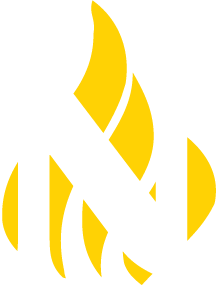Northeastern Junior College 2025-2026 Catalog
Fire Science Technologies
Fire Science Technology is the study of:
The physical properties of Fire
Strategy and tactics of fire suppression and prevention
Life Safety Engineering
Fire Administration
Fire and Public Education
Hazardous Materials Handling, Response and Transportation
Arson Investigation
Emergency Medical Response and Transportation
Disaster Management, Pre-planning and Recovery
The specialized knowledge gained through an education in fire science equips first responders with; the skills and mental tools to effectively save lives and protect property and the environment. Careers in emergency services require courage, endurance, integrity and the ability to make good and quick decisions in emergencies. Teamwork is necessary to safely solve an emergency situation. The qualities of hard work and self-discipline must be quickly mastered through both online and traditional learning opportunities. You will take these characteristics from the classroom to the fire station and throughout your life.
You may find through your training experience that you have a desire to follow other career paths within the emergency services profession. Some of the exciting careers include:
- Firefighter
- Fire Investigator
- Special Rescue and Tactics Technician
- Fire Administration Manager/Chief
- Environmental Crimes Investigator
- Public Education Specialist
- Hazardous Materials Technician/Coordinator
- Industrial Safety Officer
- FEMA Response Agent
- Emergency Manager
- Paramedic
In order to provide the best services and marketability, it is our desire to graduate students with the following state certifications:
- Fire Fighter I
- Hazardous Materials Operations Level
- Wildland Fire Fighter (Red Card)
- Emergency Medical Technician Basic
Essential Functions:
- Able to communicate effectively in English, both verbally and in writing
- Lift and carry 50 to 100 pounds
- Stand, walk on rough ground or uneven surfaces, run, balance, twist or turn, reach, pull, climb stairs and ladders, work at heights, balance, bend/stoop, crouch/squat, crawl/kneel, etc.
- Able to see near and far
| General Education Requirements | 16 Credits |
| BIO 104 Biology: A Human Approach | 4 |
| CIS 118 Introduction to PC Applications | 3 |
| ENG 115 Technical English & Communication OR | 3 |
| ENG 121 English Composition I OR | 3 |
| ENG 131 Technical Writing | 3 |
| MAT 103 Math for Clinical Calculations or higher Mat | 3 |
| PSY 102 General Psychology II | 3 |
| Program Requirements | 34.5 Credits |
| FST 100 Firefighter I | 9 |
| FST 102 Principles-Emergency Services | 3 |
| FST 105 Building Construction for Fire Professionals | 3 |
| Fire Professionals | |
| FST 107 Hazardous Materials Operation | 3 |
| FST 110 Job Placement and Assessment | 3 |
| FST 128 Vehicle Extrication Technician | 3 |
| FST 202 Strategy and Tactics | 3 |
| FST 209 Fire Protection Systems | 3 |
| FSW 100 S-190 Introduction to Wildland Fire | 1 |
| FSW 101 S-130 Firefighting Training | 2 |
| HPR 102 CPR for Professionals | 0.5 |
| PED 101 Conditioning Lab Fire Academy | 1 |
| Other Electives | Select a minimum of 13 Credits |
| FST 101 Firefighter II | 3 |
| FST 106 Fire Inspection Practices | 3 |
| FST 150 Fire Prevention Education | 3 |
| FST 170 Clinical I | 1 |
| FST 175 Special Topics | 3 |
| FST 201 Instructional Methodology | 3 |
| FST 203 Fire Hydraulics and Water Supply | 4 |
| FST 204 Fire Codes and Ordinances | 3 |
| FST 205 Fire Investigation | 3 |
| FST 253 National Incident Management | 3 |
| FST 254 HazMat Technician | 3 |
| FST 259 Wildland Firefighting Tactics | 3 |
| FST 280 Internship | 1-12 |
| EMS 116 First Responder | 3 |
| EMS 121 EMT Fundamentals | 3 |
| EMS 122 EMT Medical Emergencies | 4 |
| EMS 123 EMT Trauma Emergencies | 2 |
| EMS 130 EMT Intravenous Therapy | 2 |
| EMS 170 EMT Medical Technician Clinical | 1 |
| EDU 250 CTE in Colorado | 1 |
| EDU 260 Adult Learning and Teaching | 3 |
| REA 130 Applied Technical Reader | 2 |
| Total Hours for Graduation | 63.5 |
| NOTE: Students interested in a fire career that incorporates Emergency Medical Technician-Paramedic level work must successfully complete both Anatomy & Physiology I and II (BIO 201 and 202) courses. |

